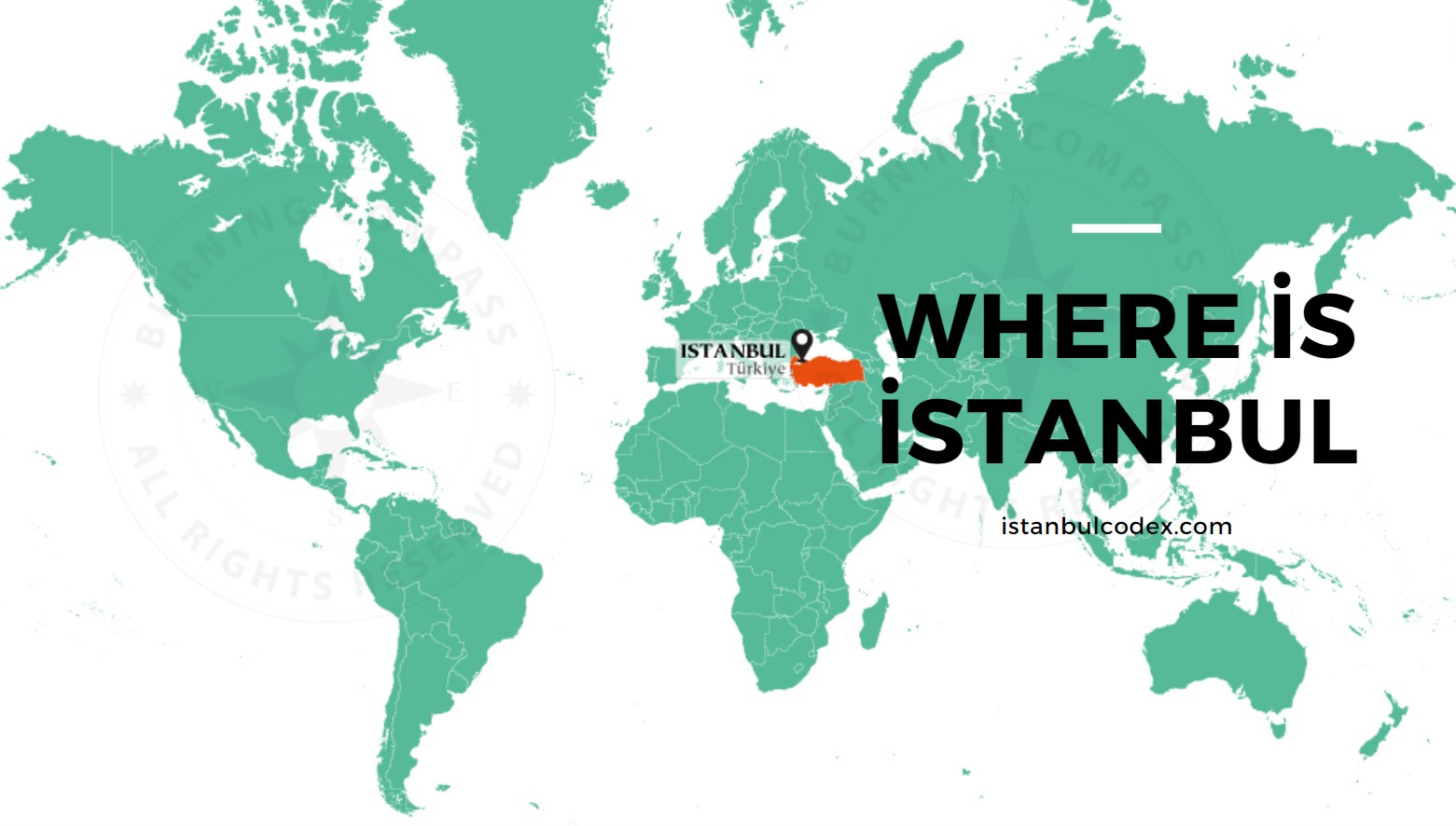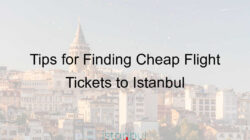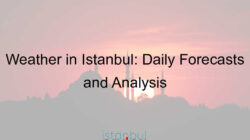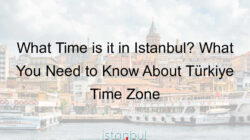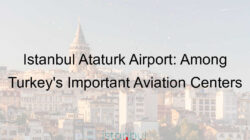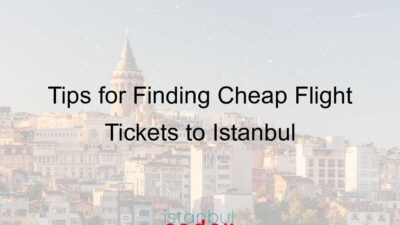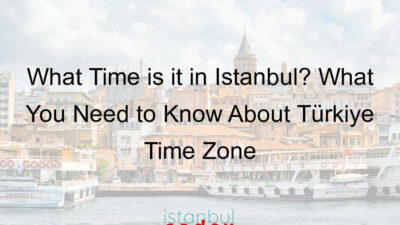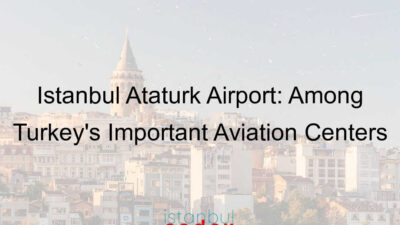where is istanbul Discovering Istanbul: A City Where East Meets West
Istanbul, often dubbed the “City of Two Continents,” stands as a vibrant testament to the confluence of cultures, history, and geography. Situated at the crossroads of Europe and Asia, Istanbul boasts a rich tapestry of heritage that spans millennia, drawing visitors from around the globe to explore its enchanting streets and iconic landmarks. But for those unfamiliar with its geographical location, the question arises: where is Istanbul?
Geographical Location:
Istanbul occupies a strategic position in northwestern Turkey, straddling the Bosphorus Strait—a narrow waterway that separates Europe from Asia. The city spreads across both continents, with its historic core situated on the European side and its sprawling neighborhoods extending into Asia. This unique placement has endowed Istanbul with a diverse cultural heritage and a dynamic atmosphere unlike any other city in the world.
Exploring the European Side:
On the European side of Istanbul lies its historic heart, where centuries-old mosques, palaces, and bazaars coexist with modern amenities and bustling streets. Here, visitors can wander through the storied corridors of the Grand Bazaar, marvel at the architectural splendor of the Hagia Sophia, or cruise along the glittering waters of the Bosphorus—a timeless experience that captures the essence of Istanbul’s allure.
Venturing into Asia:
Crossing the Bosphorus Bridge or taking a leisurely ferry ride transports travelers to the Asian side of Istanbul, where a different atmosphere awaits. Here, neighborhoods such as Kadıköy and Üsküdar offer a glimpse into everyday life away from the tourist crowds, with bustling markets, waterfront promenades, and panoramic views of the city skyline.
The Time in Istanbul:
Amidst the hustle and bustle of this cosmopolitan metropolis, one question frequently arises: what time is it in Istanbul? As a city that straddles two continents, Istanbul operates on Eastern European Time (EET), which is UTC+3. This time zone places Istanbul ahead of Coordinated Universal Time (UTC) by three hours, allowing for efficient coordination with global partners and travelers from various time zones.
Embracing Istanbul’s Timeless Charms:
Regardless of the hour, Istanbul beckons visitors to immerse themselves in its timeless charms, whether it’s savoring the flavors of Turkish cuisine, bargaining for treasures in the city’s markets, or simply watching the sunset over the majestic skyline. From the ancient streets of Sultanahmet to the trendy neighborhoods of Beyoğlu, each moment spent in Istanbul is an opportunity to embrace its rich history and vibrant spirit.
Conclusion:
In conclusion, Istanbul’s geographical location at the crossroads of Europe and Asia makes it a city of unparalleled diversity and intrigue. As visitors navigate its labyrinthine streets and iconic landmarks, the question of what time it is in Istanbul becomes a mere detail in the grand tapestry of experiences that this enchanting city offers. So, whether you find yourself exploring its historic sites or savoring its culinary delights, know that Istanbul’s timeless allure transcends the constraints of time itself.
Unveiling the Magnificence of Istanbul: A Journey Through Time and Space
Istanbul, the legendary city that straddles the continents of Europe and Asia, is a mesmerizing tapestry woven with threads of history, culture, and unparalleled beauty. As travelers embark on a quest to unravel its mysteries, they are transported through time and space, encountering a kaleidoscope of experiences that leave an indelible mark on the soul. From its ancient landmarks to its vibrant neighborhoods, Istanbul beckons adventurers to embark on a journey of discovery—a voyage that transcends the boundaries of imagination and reality.
Embarking on an Odyssey of Exploration:
The journey begins amidst the labyrinthine streets of Istanbul’s historic core, where echoes of the past reverberate through the centuries-old architecture and bustling bazaars. Here, the Hagia Sophia stands as a testament to the city’s rich Byzantine heritage, its majestic domes and intricate mosaics offering a glimpse into a bygone era of splendor and grandeur. Nearby, the Blue Mosque enchants visitors with its stunning blue tiles and graceful minarets, while the Topkapı Palace beckons with tales of Ottoman opulence and intrigue.
Navigating the Enigmatic Waters of the Bosphorus:
As travelers venture beyond the confines of the old city, they are greeted by the shimmering waters of the Bosphorus—a fabled strait that divides continents and connects cultures. Cruising along its tranquil waters, one is treated to panoramic views of Istanbul’s iconic skyline, dotted with ancient fortresses, majestic palaces, and modern skyscrapers. Along the shores, charming neighborhoods like Beşiktaş, Ortaköy, and Üsküdar offer a glimpse into everyday life in Istanbul, where fishermen cast their nets and families gather to watch the sunset over the shimmering waters.
Diving into Istanbul’s Cultural Mosaic:
But beyond its historic landmarks and scenic vistas, Istanbul is a city teeming with cultural riches waiting to be discovered. In the vibrant streets of Beyoğlu, travelers can immerse themselves in the city’s contemporary art scene, exploring galleries, cafes, and street art installations that reflect Istanbul’s dynamic spirit. Meanwhile, in the atmospheric lanes of Kadıköy and Moda, foodies can indulge in a culinary odyssey, sampling everything from traditional mezes and kebabs to innovative fusion cuisine that showcases Istanbul’s diverse culinary heritage.
Embracing the Timeless Charm of Istanbul:
Throughout their journey, travelers are inevitably confronted with the question: what time is it in Istanbul? Yet, in a city where time seems to stand still and centuries coexist side by side, the answer is as elusive as the wind that whispers through its ancient alleyways. For in Istanbul, time is not measured in hours and minutes but in the moments that take your breath away—the first glimpse of the city’s skyline at sunrise, the sound of the call to prayer echoing across the rooftops, the taste of freshly baked simit shared with newfound friends.
In Conclusion:
In conclusion, Istanbul is more than just a destination—it is an odyssey, a quest for the soul, and a journey that transcends time and space. As travelers wander its storied streets and immerse themselves in its vibrant culture, they are forever changed by the magic of this enchanting city. So, the next time you find yourself wandering the streets of Istanbul, remember that you are not merely a visitor but a participant in a timeless tale—a tale of exploration, discovery, and the boundless beauty of the human spirit. And in the end, as the sun sets over the Bosphorus and the city lights twinkle in the distance, you will know that you have experienced something truly extraordinary—a journey through the heart and soul of Istanbul.
Exploring Istanbul’s Enigmatic Location: A Journey Through Time and Geography
Nestled at the crossroads of continents and (where is istanbul located) civilizations, Istanbul emerges as a beacon of history, culture, and intrigue. Its location, perched strategically on the cusp of Europe and Asia, has shaped its destiny and defined its character for millennia. But beyond the mere coordinates on a map, Istanbul’s geographical placement is a testament to the city’s rich tapestry of stories, each woven with threads of conquest, trade, and cultural exchange.
Tracing Istanbul’s Origins: where is istanbul located
The story of Istanbul begins in antiquity, long before the city bore its current name. Originally founded as Byzantium by Greek colonists in the 7th century (where is istanbul located) BCE, the settlement quickly rose to prominence due to its strategic location along the Bosphorus Strait—a vital waterway that linked the Aegean and Black Seas. Over the centuries, Byzantium flourished as a hub of commerce and culture, serving as a gateway between the East and West.
Rise of Constantinople:
In 330 CE, Byzantium underwent a transformative metamorphosis when Emperor Constantine the Great declared it the new capital of the Roman Empire. Renamed Constantinople in his honor, the city became a symbol of imperial grandeur and Christian power, its skyline adorned with majestic palaces, towering churches, and imposing fortifications. For over a millennium, Constantinople stood as the epicenter of the Byzantine Empire, a beacon of civilization in an ever-changing world.
The Ottoman Conquest: where is istanbul located
In 1453, Istanbul witnessed a watershed moment in its history when the Ottoman Sultan Mehmed II successfully conquered the city after a protracted siege. (where is istanbul located) Renamed Istanbul, the city became the new capital of the burgeoning Ottoman Empire, ushering in an era of unprecedented prosperity and cultural flourishing. Under Ottoman rule, Istanbul emerged as a cosmopolitan metropolis, its streets teeming with merchants, scholars, and artisans from across the known world.
A City of Two Continents:
Today, Istanbul stands as a living testament to its storied past, its streets and skyline bearing the marks of centuries of conquest and renewal. Its geographical location, spanning both Europe and Asia, serves as a tangible reminder of the city’s role as a bridge between worlds—a meeting point of East and West, past and present. From the majestic domes of the Hagia Sophia to the bustling markets of the Grand Bazaar, Istanbul’s dual identity is etched into every stone and street corner.
The Question of Time:
Amidst the hustle and bustle of this dynamic metropolis, the question inevitably arises: what time is it in Istanbul? As a city that spans two continents and (where is istanbul located) countless cultures, Istanbul operates on Eastern European Time (EET), which is UTC+3. Yet, beyond the practical considerations of timekeeping, Istanbul’s sense of time is as fluid and enigmatic as the waters of the Bosphorus itself—a reminder that in this city where past and present converge, every moment is imbued with meaning and possibility.
In Conclusion:
In conclusion, Istanbul’s location is not merely a matter of geography but a reflection of its rich and complex history. From its humble origins as Byzantium to its status as a global metropolis, Istanbul has always been more than the sum of its parts—a city of dreams, desires, and endless possibilities. So, the next time you find yourself wandering its (where is istanbul located) labyrinthine streets or gazing out across the shimmering waters of the Bosphorus, take a moment to ponder the significance of its location—and remember, in Istanbul, time is not just a measurement but a story waiting to be told.
istanbul where
Exploring the Geographical Location of Istanbul: Unveiling the Gateway Between Continents
As an English geography teacher, it’s my pleasure to delve into the fascinating topic of Istanbul’s geographical location—a subject rich in history, culture, and significance. Sit back and join me on a journey of discovery as we explore the intriguing question: istanbul where?
Understanding Istanbul’s Geographical Coordinates:
Istanbul, the vibrant and dynamic city that straddles two continents, occupies a unique position on the map. Located in the northwestern region of Turkey, Istanbul is situated at approximately 41° North latitude and 29° East longitude. (istanbul where) But what truly sets Istanbul apart is its division by the majestic Bosphorus Strait, which separates the city into distinct European and Asian halves.
Exploring Istanbul’s European and Asian Sides:
To truly grasp the significance of Istanbul’s location, one must understand the geographical and cultural implications of its dual identity. On the European side, visitors encounter the historic heart of the city, with iconic landmarks such as the Hagia Sophia, the Blue Mosque, and the Grand Bazaar. Meanwhile, crossing the Bosphorus Bridge or taking a ferry transports travelers to the Asian side, where a more tranquil ambiance awaits, characterized by charming neighborhoods, scenic parks, and panoramic views of the city skyline.
Navigating Istanbul’s Waterways:
At the heart of Istanbul’s geographical allure lies the Bosphorus Strait, a narrow waterway that serves as the gateway between the Black Sea to the north and the Sea of Marmara to the south. This strategic position has long made Istanbul a vital hub for maritime trade and transportation, connecting Europe to Asia and facilitating the flow of goods, people, (istanbul where) and ideas between continents.
The Convergence of Cultures and Civilizations:
Istanbul’s geographical location is not merely a matter of coordinates but a reflection of its rich and diverse cultural heritage. Over the centuries, the city has served as a crossroads where East meets West, welcoming travelers, traders, and settlers from across the known world. From the ancient Greeks and Romans to the Byzantines and Ottomans, Istanbul has been shaped by a mosaic of cultures and civilizations, each leaving its mark on the city’s landscape and identity.
The Intersection of Time Zones:
One cannot discuss Istanbul’s geographical location without addressing the question of time. Situated in the Eastern European Time (EET) zone, Istanbul operates on UTC+3, placing it ahead of Coordinated Universal Time (UTC) by three hours. This time (istanbul where) differential, coupled with its position between continents, underscores Istanbul’s role as a global city—one that transcends borders and bridges time zones with ease.
In Conclusion: Istanbul where?
In conclusion, Istanbul’s geographical location is as multifaceted and complex as the city itself. From its strategic position on the Bosphorus to its status as a cultural crossroads, Istanbul embodies the intersection of geography, history, and culture. So the next time you ponder the question “Istanbul where?”, remember that the answer lies not just in its coordinates but in the vibrant tapestry of stories, experiences, and traditions that define this extraordinary city.

